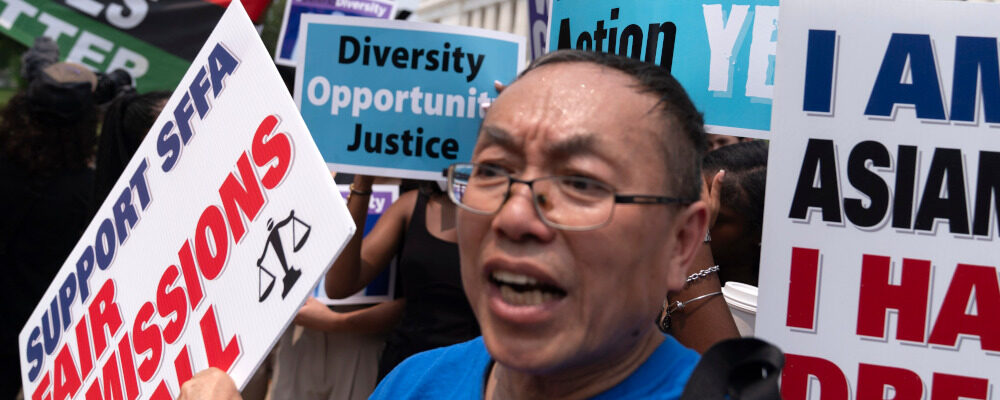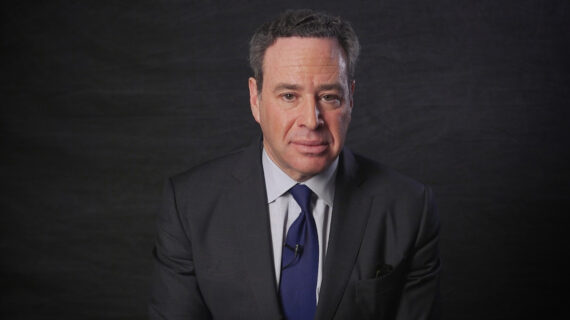The United States Supreme Court struck a critical blow to so-called “affirmative action” in higher education with its recent ruling that college admissions offices can no longer consider race when evaluating the applications of prospective students. The 6-3 decision reversed nearly five decades of established precedent allowing colleges to develop race-conscious admissions policies.
The decision marked a major victory for the plaintiff group Students for Fair Admissions (SFFA), which has held that “holistic” admissions procedures commonly used by highly selective American colleges are biased against Asian Americans; notably placing Asian applicants lower, on average, than applicants from other ethnic groups on non-academic measures like “personality”. (One of the group’s most high-profile members is Ontario-born Calvin Yang, currently a rising junior at the University of California, Berkeley.)
Indeed, a 99-page brief filed by SFFA in advance of the decision was rife with skin-crawling examples of admissions officers exhibiting blatant racial bias against Asian American applicants. One online exchange between two admissions officers at the University of North Carolina – Chapel Hill reads as follows:
perfect 2400 SAT All 5 on AP one B in 11th [grade]
Brown?!
Heck no. Asian.
Of course. Still impressive.
The same brief showed that top Asian applicants to Harvard were a third less likely than White applicants and less than half as likely as Black applicants to receive a strong personality score. (Harvard’s controversial “personal rating” scale rates applicants on abstract qualities like “leadership”, “kindness”, and “likeability”.) All told, the most elite Asian American applicants had just a 12.7 percent admit rate. Black applicants with similar grades and test scores had a better than one-in-two chance of admission. (14.7 percent of all applicants in the highest academic decile received acceptance letters).
While the evidence marshaled by SSFA is incontrovertible, I’ll cop to some degree of ambivalence regarding the Supreme Court’s ruling as a former instructor at one of the two universities named in the case.
While working towards my Ph.D. in the 2010s, I taught undergraduate political science classes for five years at the University of North Carolina at Chapel Hill. Years removed from my time in the “Southern part of Heaven”, I still look back fondly on this chapter of my career. Teaching at UNC gave me a once-in-a-lifetime opportunity to help mold some of the state’s most promising young men and women. It also left me with a lifelong connection to the Tar Heel State.
One of the things I liked most about UNC was that its undergraduate student body felt like a true microcosm of the state. Students from all 100 of the state’s counties congregated in Chapel Hill and roughly one in 12 undergraduates identified as Black (versus just 3 percent of undergraduates at the University of California, Berkeley and 4 percent of University of Michigan undergrads). UNC’s distinctly local feel was a point of pride for many on campus—UNC students jokingly dubbed rival Duke University, located just nine miles up the road, as “The University of New Jersey at Durham” (three in 10 Duke undergraduates hail from Northeastern states; double the number of in-state students).
And the diversity of the undergraduate student body (both socioeconomic and racial) undoubtedly translated into a richer classroom environment. Moderating classroom discussions on hot-button political topics felt, at times, like leading a raucous focus group of swing-state voters. Black students from Charlotte would spar passionately with MAGA hat-toting frat boys over the merits of the Black Lives Matter movement; ROTC kids would go toe-to-toe with Left-leaning townies (often the children of UNC profs) over the propriety of Colin Kaepernick taking a knee during the playing of the national anthem. It was the very antithesis of the algorithmic echo chambers that have come to epitomize political discourse in the age of social media.
More broadly, living in a former Confederate state where over one in five residents identify as Black made it impossible for me to ignore the structural disadvantages that young African Americans must navigate every day. Without fail, the “Black part” of town would be dotted with liquor stores, payday lenders, and pawn shops—without a grocery store or public library in sight. A longstanding practice of using property taxes to fund public education has left predominantly Black schools across the state chronically underfunded and under-resourced.
This structural disadvantage is perhaps reflected most vividly in the brazenness with which state legislatures in North Carolina have pursued racial gerrymandering. (Partisan redistricting is commonplace in the U.S.) In the 1990s, North Carolina’s 12th Congressional District (A.K.A. the “I-85 District”) drew national attention as the “most gerrymandered district in America.” The zig-zagging district snaked across 150 miles of highway, packing together Black neighbourhoods in the urban centres of Charlotte and Durham (located over two hours apart). The almost comically gerrymandered District 12 was litigated for over two decades before finally being blown up in a 2017 Supreme Court decision (conservative Justice Clarence Thomas joined his liberal colleagues in voting to dismantle the district).

I’ve also seen firsthand just how life-changing a UNC education can be for students from disadvantaged Black communities. One of my most memorable students, a young African American woman who grew up in inner-city Durham, was able to land a coveted internship with a prominent member of Congress (and former head of the Congressional Black Caucus) upon graduating. She later attended law school and now works as a civil litigation lawyer back in her hometown. Her story illustrates just how pivotal high-quality public universities like UNC can be to the upward mobility of racially disadvantaged students.
The U.S. Supreme Court’s decision on affirmative action has left me with mixed emotions that I still cannot fully work out. While entirely sympathetic to the grievances of the case’s Asian American plaintiffs (and, at times, a victim of the same cultural stereotypes myself), I also firmly believe that state flagship universities like UNC have an obligation to serve a broad cross-section of their respective states—and a special obligation to young people from disadvantaged communities. Such institutions are also one of the last fora, in our siloed and polarized climate, where young people from virtually all walks of life can come together and engage in good-faith discussions of topics of political and social importance. I fear that the SFFA decision will contribute to elite universities becoming even more insular ivory towers (although that horse may, admittedly, have already left the barn).
Even as the SFFA decision has established, definitively, that race-conscious admissions policies can themselves perpetuate racial bias, it will be far from the last word on racial equity in higher education. My own time at UNC has shown me that affirmative action is not a straightforward, black-and-white issue, but one shrouded in shades of grey.




